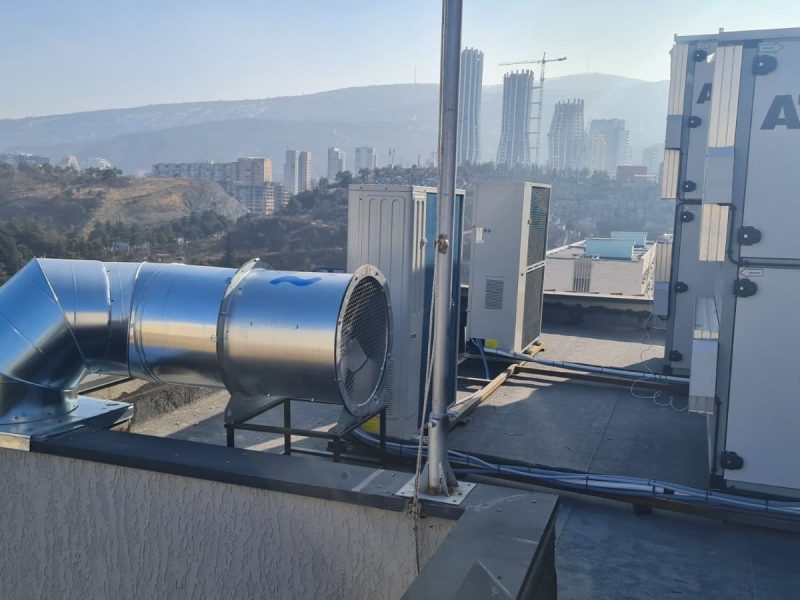
Air Conditioning Systems: A Comprehensive Overview by Fanturk
In the world of modern comfort, the term “air conditioning system” is synonymous with cool and cozy indoor environments. Fanturk is dedicated to unraveling the mysteries behind air conditioning systems and shedding light on their essential role in providing comfortable and pleasant indoor spaces. This article will delve into the intricacies of what an air conditioning system is, how it operates, and the benefits it brings to homes and businesses alike.
What is an Air Conditioning System?
An air conditioning system is a complex arrangement of components designed to control indoor temperature, humidity, and air quality. Its primary function is to create a comfortable and conducive living or working environment by cooling or heating the air as needed. Air conditioning systems are versatile solutions that cater to a wide range of spaces, from small residences to large commercial complexes.
Components of an Air Conditioning System
- Evaporator Coil: The evaporator coil is responsible for absorbing heat from indoor air, which causes the refrigerant to evaporate. This process results in cool air being blown into the living or working space.
- Condenser Coil: The condenser coil releases the heat absorbed by the refrigerant into the outside air. This allows the refrigerant to condense back into a liquid state, ready to absorb more heat.
- Compressor: The compressor is the heart of the air conditioning system. It pressurizes and circulates the refrigerant, enabling the heat exchange process between the evaporator and condenser coils.
- Refrigerant: Refrigerants are substances that facilitate the transfer of heat. They undergo phase changes from a low-pressure gas to a high-pressure liquid and back, extracting heat from indoor air and releasing it outside.
- Thermostat: The thermostat serves as the control center for the air conditioning system. It allows users to set the desired indoor temperature and regulates the system accordingly.
- Ductwork: Ducts are pathways through which conditioned air is distributed throughout the building. Properly designed ductwork ensures even air distribution and maintains consistent comfort levels.
How Does an Air Conditioning System Work?
The operation of an air conditioning system follows a systematic process to achieve optimal indoor comfort:
- Cooling Cycle: When the indoor temperature rises above the set point on the thermostat, the system kicks into action. The refrigerant absorbs heat from indoor air at the evaporator coil, turning it into a low-pressure gas.
- Compressor Action: The compressor pressurizes the low-pressure gas, causing it to become a high-pressure, high-temperature gas.
- Heat Release: The hot refrigerant gas flows through the condenser coil located outside the building. Heat is released into the outdoor air, causing the refrigerant to condense back into a liquid state.
- Cool Air Delivery: The condensed refrigerant moves to the evaporator coil, where it expands and evaporates, absorbing heat from indoor air and cooling it.
- Air Distribution: The blower fan circulates the cool air through the ductwork and into different areas of the building.
Benefits of an Air Conditioning System
- Temperature Control: Air conditioning systems maintain consistent indoor temperatures, ensuring comfort even in the hottest or coldest months.
- Humidity Regulation: Air conditioning systems help control indoor humidity levels, preventing issues like mold growth and enhancing comfort.
- Improved Air Quality: Many air conditioning systems include air filtration, removing dust, allergens, and pollutants for better indoor air quality.
- Energy Efficiency: Modern air conditioning systems are designed for energy efficiency, reducing utility bills while providing optimal comfort.
- Enhanced Productivity: Comfortable indoor environments foster better focus, concentration, and productivity.
Conclusion
Air conditioning systems from Fanturk are not just machines; they are the architects of comfort, creating indoor havens where individuals can thrive and unwind. Fanturk recognizes the importance of air conditioning systems in enhancing the quality of life for occupants, whether at home, at work, or at leisure. By expertly managing indoor temperature, humidity, and air quality, air conditioning systems ensure a seamless blend of technology and tranquility. From scorching summers to chilly winters, an air conditioning system transforms any space into an oasis of comfort and well-being, courtesy of Fanturk.
